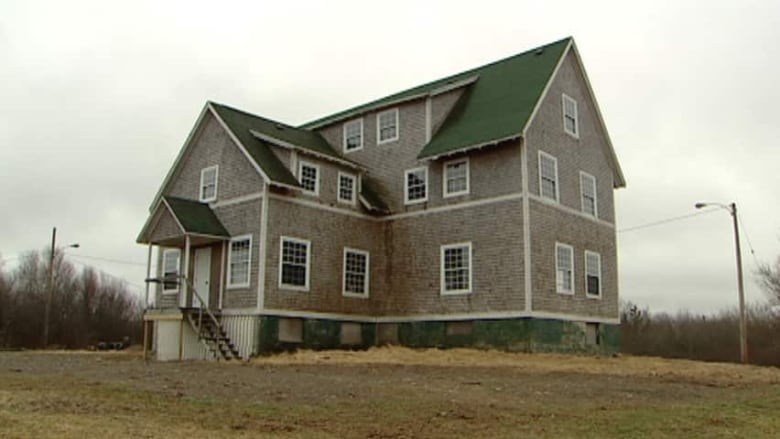Virtual reality a 'teacher's dream' but high cost keeps it largely out of schools
Expensive to develop and still unproven as effective, virtual reality creeping into classrooms

Inside St. Michael Catholic School in downtown Toronto, a group of fourth grade students take their first step into virtual reality (VR).
Collectively, they giggle and gasp as they lift the goggles to their faces, leaving behind the white brick classroom and slipping into a chilly mountain scene at the base of Everest.
"It felt like I was in a helicopter, looking at it from above," said student Daniel Tesfu, describing the experience. Sitting next to him, Bezza Meeraf is looking at a coral reef.
"It's like you're underwater, you're a scuba diver, and it's also like you're in a submarine," she explained.
Their teacher Rebekah Henick loves it.

"The fact that I can virtually take them some place we'd never be able to visit is just a teacher's dream," she explains. But that dream is just not affordable for many schools.
Henick's school usually fund raises about $2,000 a year for various projects. Google Expeditions, the kit they were able to try, retails for up to $15,000. That includes headsets, smart phones, and software.
With tight school budgets, the price can be an obstacle too big for many.
"We need workbooks, and we need pencils and we need school supplies for the kids," said Henick. "So it is a really huge price tag." It's one she would be willing to fund raise for.
Only two per cent of schools in Toronto have stepped into the virtual reality arena and purchased units.
Mason Road Junior Public School is one of them. Vice principal Joseph Romano has been pushing for VR in the classroom, calling it "the next piece of technology students will be looking to."
His school has purchased a few mobile units that offer 360 degree photos and they are looking for money to upgrade to PC-based units with tethered headsets, sound, and moving images.
A magic school bus experience
According to Canadian VR entrepreneur Josh Maldonado, the high-end version of VR is the true experience. Maldonado grew up in Toronto and created educational VR software as part of a university project, which then spun into a start-up company who provided schools with the software.
"We thought that this would have huge implications on education, so we built a little VR field trip through blood cells, kind of like the magical school bus," said Maldonado.
But his project didn't succeed as a business model. So he turned it into a non-profit to encourage the development of VR as an educational tool.
"For most start-ups, it's really hard because the market's really early," Maldonado said. "There's not enough adopters of headsets out there and ... the tech just really isn't there yet."
'Virtual reality will democratize experience'
Maldonado still believes in the power of VR in classrooms. He said the technology has "massive implications" for education.
"Just like the internet democratized information ... virtual reality will democratize experience."
The 25-year-old has now moved to work in the VR sector in San Francisco, where he said it is thriving in schools.

"VR in education is a very lofty goal, it's a very lofty idea," said Maldonado. "Canada, I think even in their tech industry, for the most part is pretty conservative."
"San Francisco is a place where they give a chance to those types of ideas."
According to Maldonado, VR hasn't caught on in Canadian schools yet because of the high cost and cumbersome set up for teachers. As technology progresses, he expects costs to come down. But even with lower equipment prices, meaningful VR content is still expensive to create.
Virtually exploring Canadian history
A few have dabbled in bringing VR to schools — students in James Bay communities learned Cree syllabics using virtual reality while Manitoba Public Insurance has used it to show students the dangers of drinking and driving.
And Kristina Llewellyn, a professor at the University of Waterloo and faculty member at The Games Institute is working on a $500,000 dollar VR project for Nova Scotia high school students — dubbed the Digital Oral Histories for Reconciliation (DOHR) project.
"There's great criticism about VR and technology generally for education, that it is about disconnection and a lack of communication skills for young people," she said. "This is meant to do the opposite."
She said the project will:
- be used in Nova Scotia grade 11 high school history courses.
- include stories from survivors of the Nova Scotia Home for Colored Children.
- include animated images from inside the home.
The project involves educators, software engineers, historians, and survivors of the school. It will take roughly a year-and-a-half to develop and is being funded through government and business partnerships. And though Llewellyn may be at the forefront, she admits more studies need to be done on the effectiveness of the technology.
"There's little evidence that it is useful," she said. "I think there is a lot of potentiality in VR."

If VR is going to prove useful in the classroom, she said, it needs to be thoughtful and meaningful and should be created by educators, not by companies for profit.
"VR should be a vehicle through which we are trying to produce some deep learning. And VR should not be just the source of some new entertainment or a new trend in education."


